

Background: The Armenian Kamancha is a four stringed fiddle played with a horsehair bow in the upright position. It is native to the Armenian highlands and originated in the Urartu era (8th century B.C.). The instrument consists of a bowl shaped resonation chamber (the Chanakh) and the sound board is of fish skin which the bridge rests on. The most notable kamancha player is the 17th century Armenian Ashough (troubador), Sayat Nova (Harutyun Sayatyan). Eventually, the kamancha was improved by an Armenian from Tiflis, Sasha Oganesashvili (Alexander Ohanyan) in the 18th century, he raised the number of strings on the kamancha from three to four to improve its technicalities, since kamancha's before this modification had only three strings, thus causing various limitations and difficulties.
Tuning: La-Mi-La-Mi
Materials: Apricot wood, Walnut wood, or Mulberry wood, and fish skin (soundboard).

Background: The Armenian Tar is a 11 stringed lute like instrument held against the chest while playing and utilizes the use of a plectrum. The tar has it's origins in the Urartu/Hittite era (8th century B.C.) and was modified by Sadikjan Asaduryan of Shushi in 1890. Sadikjan raised the number of strings from 6 to 11 and modified the sound chamber. The tremolo technique is usually utilized while playing the tar and the shaking of the instrument to produce some vibrato.
Tuning: La, Mi, Mi, La, Mi, La (bottom to top)
Materials: Mulberry wood and cow heart skin (soundboard).
Background: The Armenian Kanon is a 72 stringed plucked zither with each set of strings arranged in threes and plucked with two index finger plectrums. The instrument is believed to have originated from the multiple lyre/harp like instruments that existed among the ancient Hittites, Hurrians, Urartians, and Sumerians (ancestors of the Armenians). The kanon is distingushed by a western Armenian variant (right) and a eastern Armenian variant (left). The western Armenian variant includes many metal mandals for quarter tone adjustments where as the eastern Armenian variant has only two mandals for each set of strings. The western Armenian kanon (played primarily by men) has a piercing tone and the eastern Armenian kanon (played primarily by women) has more of a mellow tone.
Tuning: The first most thin set of three strings are tuned to either Si or Do and the following sets are tuned according to the mugham scale.
Materials: sheep- skin (which the bridge rests on) , mahogany, rosewood, walnut, etc. woods.
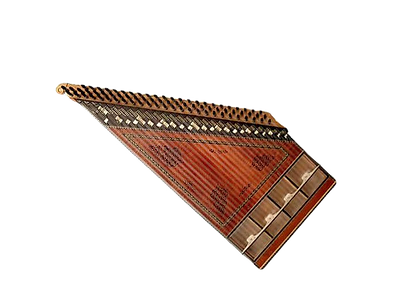

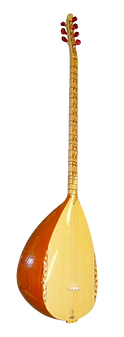

Background:The Armenian Saz is a 7-9 string long necked/fretted lute and is played with a small plectrum. The instrument is believed to have originated during the Urartu era and was played by soldiers during war time, as it was believed to have brought the protection of the deities upon them. The saz can be distinguished by two variants; an eastern Armenian variant with 9 strings arranged in sets and the western Armenian variant with 7 strings arranged in sets.
Tuning: Sol-Re-La
(first set, second set, and third set)
Materials: Mahogany, Walnut, and Spruce (soundboard) woods.
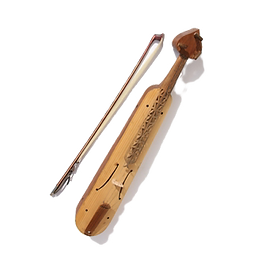
Background:The Armenian Kemenche/Kamani is a 3-4 stringed fiddle played with a horse hair bow. The instrument is believed to have originated during the Urartu era and was played during war dances and circle dances. The Kemenche (left) is played by the Hamshen Armenians of the Black sea coast, western Armenia and is used to accompany their dances (horon, srabar, trtruk,etc.). The Kamani (right) is played by Armenian folk ensembles and Ashoughs (troubadors).
Tuning: Kemenche is tuned to Si-Mi-La or Mi-La-Re and the Kamani is tuned to Sol-Re-La-Mi or La-Mi-La-Mi.
Materials: Walnut, Spruce (soundboard), and Pine woods.
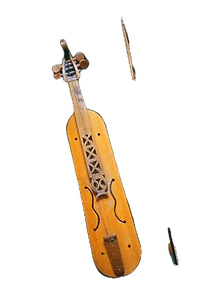

Background: The Armenian Santoor is a 72-74 stringed hammered dulcimer and is played with two wooden hammers. The santoor is believed to have originated from the various harp like instruments that existed in the Armenian highlands since antiquity. The instrument comes in two main different forms and both are equally utilized in Armenian folk ensembles. The number of strings vary between the two main forms of the santoor and the difference between them can be attested to the fact that one is smaller than the other.
Tuning: The first set of 4 strings are tuned to Sol and the rest of the set of fours are tuned according to the desired mugham scale. The kamurjner (bridges) can be moved to sharpen or flatten the note.
Materials: Walnut or Mahogany woods.


Background: The Armenian Oud is a 11-12 string lute played with a plectrum (mizrap). The instrument is believed to have originated during the Sumerian/Hittite era and various archeological findings of ancient Armenian pottery, which depicts people playing a more primitve form of the oud, suggests that the oud originated in the Armenian highlands. The oud comes in two different forms, the western Armenian oud (first picture) and the eastern Armenian oud (second picture). The western Armenian oud is smaller than it's eastern Armenian counterpart and has a more louder/piercing tone. The eastern Armenian oud is larger than its western Armenian counterpart and has a more base tone. The oud was adopted by the Arabs during the Arab Abbasid invasions of Armenia.
Tuning: The oud is tuned to Mi-La-Si-Mi-La-Re (e-a-b-e-a-d).
Materials: Mahogany, Spruce (soundboard), Walnut, Rosewood, etc.
Background: The Armenian Bambir is a 4 string fiddle played with a horsehair bow. The instrument is believed to have developed from the Kamani and went extinct after the medieval era, until its depictions were discovered in a Armenian medieval manuscript in the 21st century, thus causing a rediscovery of this beautiful Armenian instrument. The bambir is utilized as both a Armenian folk ensemble instrument and as a solo instrument.
Tuning: La-Mi-La-Mi
Materials: Apricot, walnut, spruce (soundboard), and mahogany woods.


The Armenian Duduk is a double reed woodwind instrument constructed of apricot wood and it's original ancient Armenian name is "Tsiranapogh" (apricot woodwind instrument). The instrument was used in pagan temples to venerate the deities during the pre-christian era and today is a symbol of Armenian music on a international level. The duduk has made its way into various well known movies such as "The Gladiator". The sound of this magestic woodwind instrument has charmed the world and continues to represent the rich and ancient Armenian heritage. One must soak the duduk's cane reed in water for a few minutes before playing.

The Armenian Zurna is a double reed woodwind instrument constructed of apricot wood and is known for its loud/piercing sound. The instrument was used in pagan temples during the pre-christian era to venerate the gods/goddesses and accompanied circle/line dances. Today, the zurna continues to play a powerful role in Armenian folk music and dance music. One must soak the zurnas cane reed in water for a few minutes before playing.

The Armenian Shvi and Blul are small/medium sized flutes constructed of apricot wood, with a distinct sound, and they were primarily utilized by shepherds and pagan priests (Kurms). Shepherds used the shvi and blul to communicate with each other by playing particular notes or melodies which would be translated into sentences. The pagan Armenian priests played the shvi and blul in the temples, because they believed music was a divine entity and that it got them closer to the gods/goddesses.

The Armenian Parkapzuk is a bagpipe that is constructed of cane reeds, apricot wood or cane, and a sheepskin sack. The instrument was popular during the pre-christian era and accompanied circle dances. Today, the parkapzuk is popular among the Hamshen Armenians of the black sea coast in western Armenia and is popular among the people of central Armenia who use it to accompany circle dances. The instrument comes in two distinct forms, a double chanter form (with a drone), which is the most popular and a single chanter form (no drone).
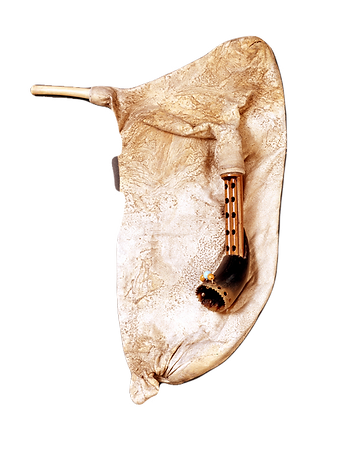
The Armenian Pku is a double reed woodwind instrument constructed of apricot wood and horn. The instrument was used during the pre-christian era to accompany dances and rituals at the temples. Today, the pku plays a valuable role as a woodwind instrument, which accompanies folk dances with its powerful sound.

The Armenian Dhol is a double sided drum constructed of apricot/walnut wood and fish skin/sheep skin drum heads. The instrument accompanied the various Armenian woodwind and stringed instruments that existed during the pre-christian era and continues to play the same valuable role today. The dhol is essentially the foundation of Armenian music and serves as the base of folk ensembles and individual instrumental performances.

The Armenian Daff is a round frame drum constructed of mahogany or apricot wood, fish skin face, and rings attached to the interior. The instrument accompanied the various Armenian woodwind and stringed instruments that existed during the pre-christian era, was used during rituals in the pagan temples, and played a key role in pagan Armenian music. Today, the daff is used in Armenian folk ensembles and is usually seen accompanying the Armenian Tar & Kamancha in trio performances.


The Armenian Davul is a double sided large drum constructed of walnut wood/ sheep skin drum heads and utilizes two beaters that vary in thickness/size. The instrument accompanied the various Armenian woodwind and stringed instruments that existed during the pre-christian era and played a key role in pagan rituals while accompanying the zurna. Today, the davul is paired with the zurna and is used among various Armenian folk music ensembles and dance ensembles, to accompany dance songs.
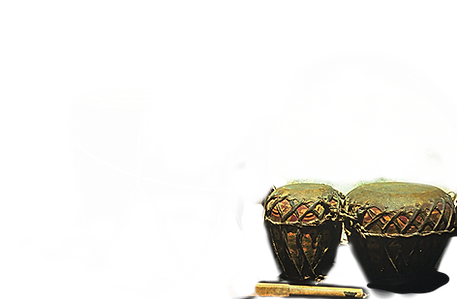
The Armenian Ghosha is a double-drum percussion instrument used in 6/8 Armenian folk songs. The drum is constructed of walnut/pear wood, has sheep skin, and is played with two sticks.












